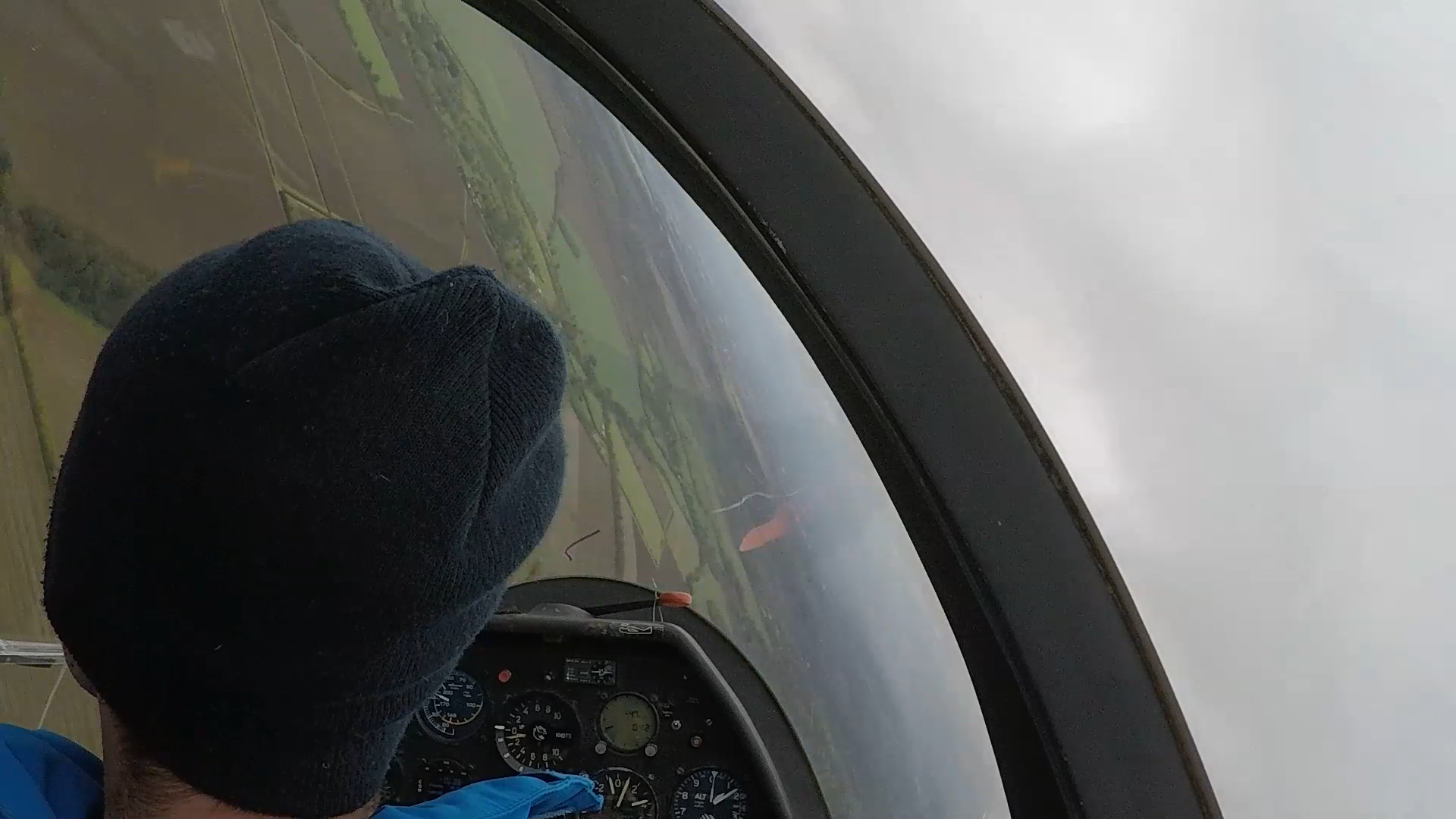Aerobatics
Where I started my gliding, a top aerobatics instructor would, on occasion, run introductory courses. These always seemed hugely exciting, if a little fantastical and farfetched – at least for the pre-solo adolescent I was at the time.
Fast forward to late 2020, I had just got my Silver and the aero training slots advertised by Martin Whitehead seemed like a perfect opportunity to deepen my understanding of the flight envelope, add some finesse to my flying and indeed have some fun doing it. Writing now, the day after completing my BGA Standard Aerobatic Badge, I can safely say that the course met each one of these objectives.
This piece is an attempt to describe my experience with the Standard Badge, with a view to inform other interested pilots, hopefully convincing some of them to complete the course themselves.
My first day of aeros, in mid-October 2020, began with a couple of tows through gaps in a frustratingly low cloud base, with both launches being under 3000ft. Despite that, we were able to fit 3 Loops & 2 Humpty Bumps in the first flight and 1 Humpty & 2 Chandelles in the second.
For some context, let me quickly describe each of these figures. A Loop is exactly what you think. A Humpty Bump, or Humpty, is a ¼-loop to a vertical line upward, a tight ½-loop to a vertical line downward then another ¼-loop back to horizontal. A Chandelle is a 45° line upward, a smooth roll and pull to a 45° line downward, after levelling the wings.



These three figures, in that order, formed my sequence. Bookend these with a diving line and a climbing line then complete the flight with a 270° turn. [I wish I knew why it was called a Humpty Bump. Perhaps all the King’s horses and all the King’s men couldn’t navigate all the necessary CAA bureaucracy to put Humpty together again!]
That 270° turn, innocuous as it may sound, proved to be the figure I found most challenging. In this figure, you roll quickly using only ailerons, then use the elevator to bring the nose around while coordinating the rudder to keep the nose on the horizon. Everything must be perfectly coordinated, and it felt to me like the rudder and elevator had their roles reversed, which made it particularly tricky. By contrast, the Loop is just a matter of pulling back on the stick.
Back to that showery day in mid-October. In the afternoon, we took advantage of a break in the clouds to tow to 4000ft. The skyscape was dominated by an enormous cumulonimbus cloud over Cambridge. Another line of CuNim to the west sandwiched the crystal clear autumn air that I proceeded to fill with turbulence from my sloppy aeros! Indeed, these high aerotows through intersecting layers of cloud were one of the delights of the aerobatics training – even if my wallet didn’t like them quite as much!
On that last flight, I attempted the full sequence of figures. When my 270° turn wasn’t up to standard, Martin demonstrated how the turn could be sustained indefinitely, holding 4G throughout. This was the first time I really felt the effects of G: my vision started going grey. This wasn’t uncomfortable but was a little alarming. Fortunately, I haven’t had that problem since.



Lockdowns disrupted the other aerobatics training I had booked, so by June 2021, I was rather rusty. A flight from a 4000ft tow acted as a refresher and, when I completely buggered the circuit, acted as a lesson in clearing one’s head with some deep breaths before speeding into high key at 75 knots…
Finally, since the cloud base allowed, a 5000ft lob gave me some time to practise recovery from awkward positions and to string all the sequence together before completing the sequence solo.
My summary? I finished this training with a deeper understanding of both my own and the aircraft’s limitations. I feel more comfortable with my ability to control the aircraft and recover it from dangerous situations. Of course, I was also left with a big grin from ear to ear.
A special mention to Steve Pleasance for his encouragement on the day that I completed the Badge and indeed a huge Well Done for completing the badge himself! Of course, enormous thanks go to Martin for his teaching, training and for putting up with my circuit planning, which seems to go rubbish after any aerobatics…
Charlie Brooker